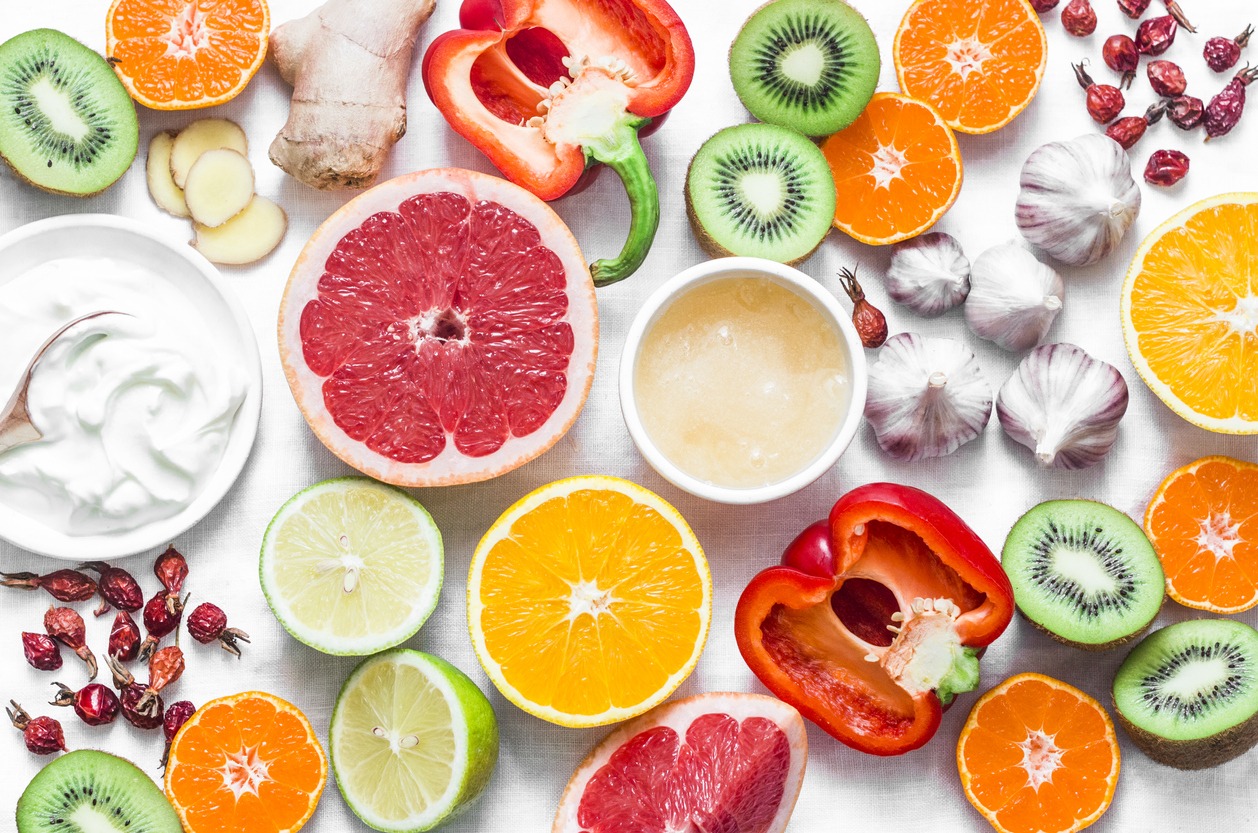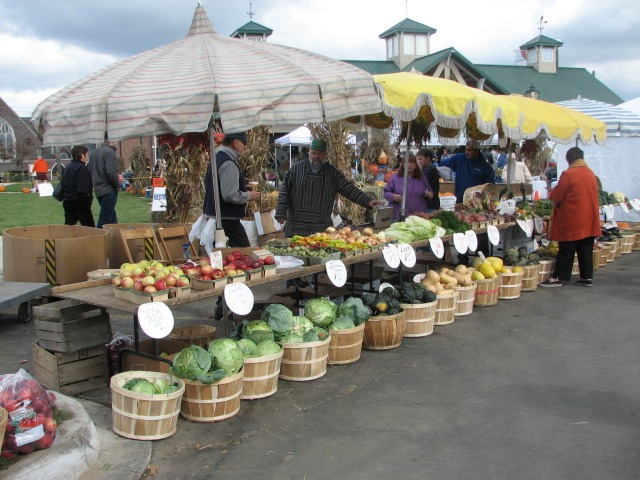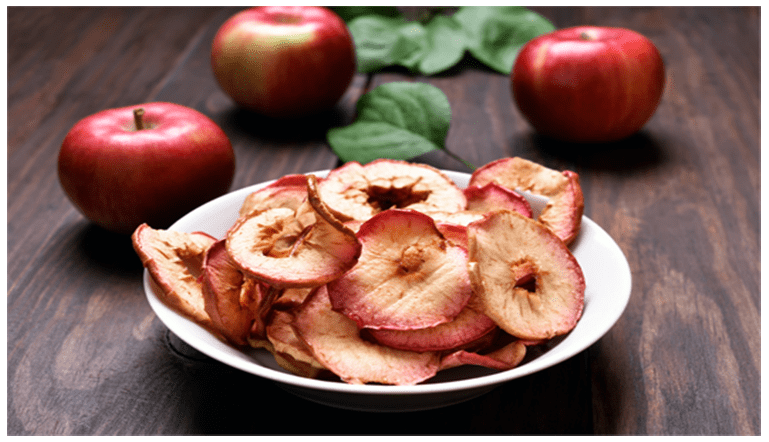1. Plan ahead
Know the exact amount you can afford to spend on food and stick to your budget. Having impulse purchases can easily ruin your budget and you become tempted to buy anything that you come across when you’re out shopping. Planning ahead will help you stick with your budget and avoid impulse buys at your supermarket or organic grocery.
Create your list of meals and list out ingredients. Make sure that your meals have a healthy balance of protein, carbohydrates and fats. Your ideal list must consist of a wide variety of seasonal fruits, veggies, nuts, seeds and some other healthy protein sources.
2. Buy seasonal fruits and vegetables
It’s a wise thing to stick to the fruits and vegetables currently in season. Have you ever wandered out to buy a fruit that costs below around 30 cents to almost a dollar throughout the year? Prices of produce become higher when it’s out of season, as it’s either stored for a long time or has been imported, and the additional costs are passed on to the price of the goods.
For instance, buying strawberries in summer when they are growing in abundance is going to cost a small fraction of the cost of buying them in the depth of winter when they have to be imported from the other side of the world. Flying strawberries, and other produce, into the US from overseas is expensive. Only buy produce that’s in season, and you’ll save a small fortune.
But it’s not all about money. Buying fruit in season usually means it’s fresher and has a higher nutritional content. Produce grown in the US can be shipped to the store in a matter of hours, while produce shipped from the other side of the world can takes days or weeks to arrive. What this means in practice is that the produce is usually harvested before it’s ripe, as that is the only way to stop it from spoiling while in transit. Unripe produce tends not to ripen much, if at all, after it’s been harvested, so the nutritional value is usually lower. Some produce also has chemicals pumped into it in order to artificially ripen it. I’m sure everyone would agree that produce that’s picked when naturally ripe tastes so much better than the produce you often get at big stores that isn’t quite ripe.
Another advantage of buying produce that’s in season is that you will get more variety in your diet. Most people tend to stick to eating the same foods all year round. If they only bought fresh produce that was in season, they’d be forced to try different foods that they wouldn’t usually consider. Our bodies need a variety of nutrients, and the best way to get these is to eat a wide variety of foods. This is the complete opposite of what most people do these days, which is to buy the same foods week in, week out, all year round.
3. Shop at more than one store
Not shopping at more than one store is a mistake that nearly everyone seems to make. There are a variety of reasons for this, but it’s mostly down to clever marketing by the big stores. Add to this the fact that most people these days are very busy and want to do their weekly shop in one go, and you have a recipe for overpaying for your food.
Different stores have different prices for goods, so if you shop around and compare differences, you’ll be amazed with some of the differences in price. For instance, if you’re looking for Asian goods like bok choy and kimchi, they are usually cheaper at Asian groceries than supermarkets. Shopping at big supermarkets can be very convenient because everything is at one place, but you are actually paying extra for the privilege of shopping this way.
4. Shop at local farmers’ markets
When shopping at a local farmers’ market, you will usually get produce that’s much fresher, and much cheaper than at your local store. At these markets farmers tend to pick the produce right before they come to the market, and you’ll get a big discount on the store price because you are cutting out the middleman. Your local supermarket needs to pay for a store, staff, and other running costs, so they have to mark prices up substantially in order to remain profitable. Buying directly from the farm saves all these costs.
Because you’re getting the produce fresh it will be more nutritious, so as well as saving money you’ll also be getting more nutrients. Produce at the store can sometimes be weeks old, because they have to buy in huge quantities, get it delivered to a central warehouse, then on to regional warehouses before it’s sent to the individual stores. Some farmers’ markets buy the produce picked the same morning it was sold.
Nearly every major city has a farmers’ market these days, and they are getting increasingly popular for a variety of reasons. People are more environmentally aware and more aware of health issues. They want to buy local produce that they can trust and that they know is causing the minimum of environmental damage.
If you live in the country it’s possible that there may be some farms near you that would be happy to sell you some of their produce. And if you’re not near one, check your local area to see if there are any deliveries available from the farms in your area.
5. Check the frozen aisle
You may not always consider frozen foods as healthy option. But there are frozen fruits and vegetables that are organic and frozen. In fact, some of them can be fresher than non-frozen produce because they are frozen almost immediately after picking. This means the nutrients in the produce were kept intact than if it was transported across the country.
Frozen fruits are great to use in smoothies, while frozen vegetables can be blended with herbs and spices to make filling raw soups.
6. Buy in bulk
This is an obvious solution when it comes to nuts and seeds. If you check the price of a nut in 1lb. bag, 2 lb. and 4 lb., the cost per pound will be less if you buy the 4 lb. bag. If you do this, then you have enough supplies for four weeks.
One thing that you need to be careful about though is not buying too much of products that have to be eaten quickly. So there’s no point buying fresh fruit and vegetables in bulk if they will have gone off before you get a chance to eat them. This would be a great way of losing money, not saving it. However, you can bulk buy fresh produce if there is a group of you, as that way you’ll be sharing the produce while all making savings.
The best produce to bulk buy is obviously food that’s non-perishable, as that will keep for at least a few weeks. That way, the food will still be fresh enough to eat and still have its nutritional value intact.
7. Substitute
If a recipe asks for something that is super hard to find and expensive to buy in your area, make it flexible and look for an alternative ingredient. It also works if a recipe asks for something that’s currently out of season and expensive. Ask yourself whether it’s really essential for the recipe. Often the recipe will work just as well with a less expensive ingredient. Most of the times, the expensive ingredient for you was available for the person who created the recipe.
For instance, if the recipe calls for goji berries, you can simply substitute raisins or sultanas, both of which are usually much cheaper. They also taste just as good, and work very well in almost every recipe I’ve ever tried that lists goji berries as an ingredient. If you’re in the US you should have access to some amazing sun-dried raisins, so use them in your recipes.
8. Keep it simple
If you want to eat more raw foods but want to stay in your budget, keep it simple. You don’t need to make a meal with lots of ingredients. You can stick to making smoothies or juice for breakfast, salads for lunch and raw soups or mains for dinner.
You’ll want to have these items on hand always: a variety of leafy greens, cabbage, tomatoes, carrots, cucumber, onions, cauliflower, apples, bananas, zucchini, beets, garlic, pepper and avocado. You also want to have a stock of almonds, flax seeds, sunflower seeds and apple cider vinegar at all times. These ingredients can make a whole lot of recipes while staying on the budget because these foods are not expensive. Include seasonal ingredients and avoid expensive out of season items and you’ll be fine.
9. Grow your own produce
Growing your own produce at home will easily help you save more. Don’t think that you need to have a big garden and green fingers to take advantage of this money-saving tip. First of all, you can sprout, and you can do that even if you live in the smallest of spaces. Sprouting seeds, nuts, grains or legumes can give you a different-tasting produce out of the same materials to add variety to your diet. Sprouting also enriches the nutrients. This will also be cheaper than buying sprouts from the store.
But growing your own isn’t just about sprouting. Even those that have smaller spaces will be able to grow a few herbs. Fresh herbs can be expensive to buy at your local store, but are practically free if you grow them at home. And like sprouting, you can make sure they are organic, fresh, and always available. There is nothing quite like just cut herbs to liven up a recipe. Herbs are packed with nutrition, so are a great addition to any diet.
If you have a small outdoor space such as a balcony, patio or small yard, then you can grow much more. A few tubs are all you need to get started, and you can grow all manner of fruit and vegetables. I’ve even known people to grow potatoes right on their small balconies. What you grow depends on your local climate, so you are best sticking to produce that is easy to grow in your area. But almost anyone is able to grow tomatoes, peppers, cucumber, zucchini, and other salad vegetables.
If you have a house with a larger garden, then you can grow almost anything, including fruit trees. I’ll admit that gardening may not be for everyone, but if you have the space I’d urge you to at least give it a try. You don’t have to plant a huge garden all at once, but can start off slowly. Plant a few things, watch them grow, and then harvest and eat them. You might find that you really end up enjoying being out in your garden. And gardening is healthy, as it get you moving and gets you out in the fresh air.
10. Dehydrate and preserve
Most fruits and vegetables can be preserved or pickled so you can enjoy them all year-round. For instance, you can turn a cabbage to a sauerkraut so it will last longer. The sauerkraut can become an easy dressing for salads. Raw snacks, especially fruit, can be dehydrated to make dried candies and fruit leathers.
Many people are familiar with dried fruits, but not so familiar with dried vegetables. But vegetables can also be dehydrated and stored for later use. Dried vegetables are ideal for hearty winter soups, or just sprinkling on salads as a condiment. Once they are dried they will be easy to grind down into flakes or powder to use as seasoning.
11. Freeze fruits and vegetables
If dehydrating isn’t for you, then how about freezing your produce? Freezing foods has been used for centuries, and is one of the best ways of preserving food. You can freeze your fruit to make delicious desserts and smoothies. The beauty of making smoothies with frozen fruit is that the fruit is the only ingredient you need. There’s not need to add ice, water, sugar, or anything else. Fruits that work best for smoothies are usually the pulpy fruits – banana, papaya, mango, pineapple. I usually add in a fresh avocado as well, as this adds an abundance of healthy fats. But the fat content means that avocados aren’t suitable for freezing.
When freezing fruit you need to make sure you cut it up before freezing. Trying to cut fruit after it’s been frozen is not recommended at all, as the knife can easily slip and cause a serious injury. So make sure you cut the fruit first. This will also mean that the fruit freezes more quickly and more thoroughly.


